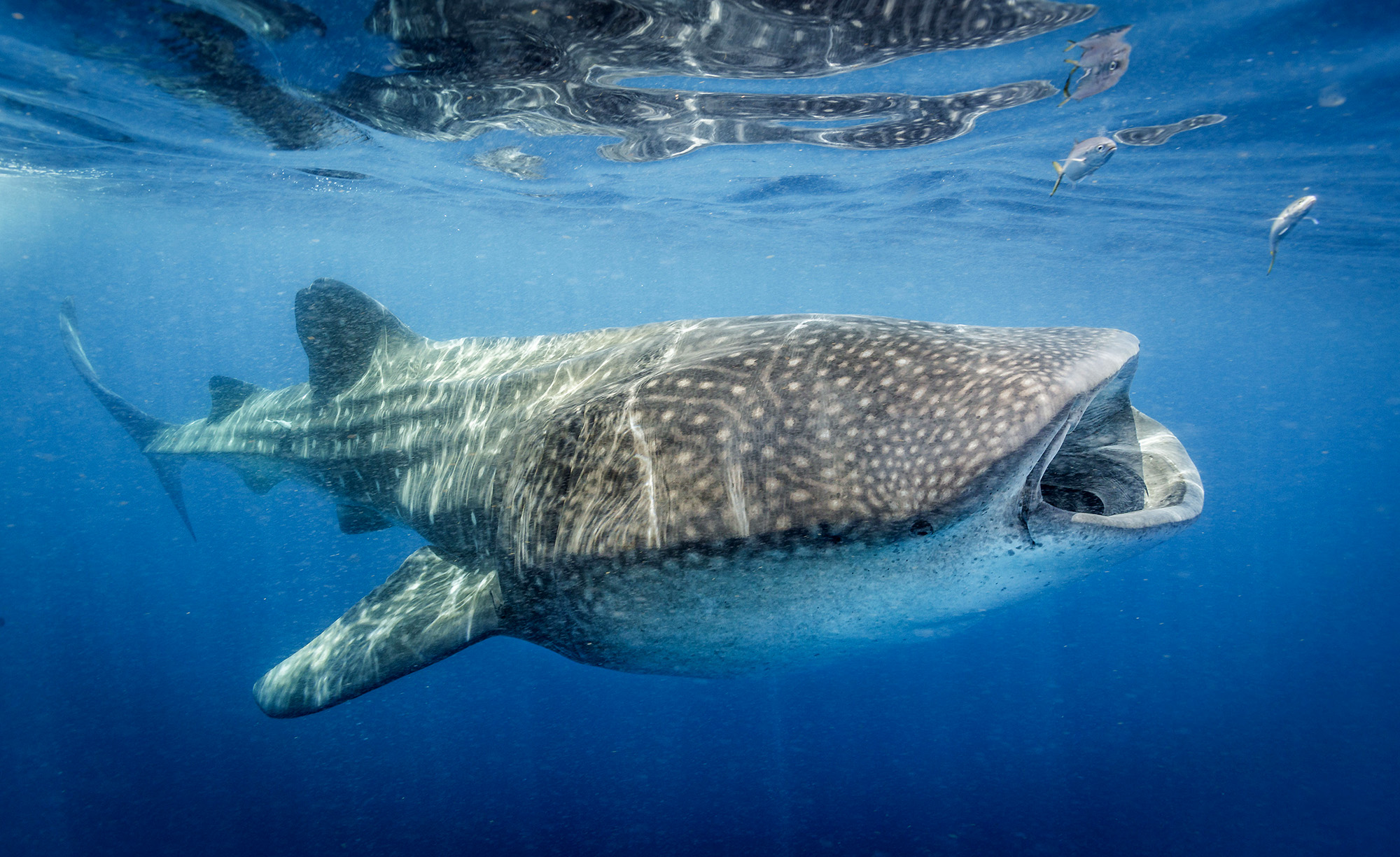
The boat pulls away and I am left floating alone in the middle of the ocean with my snorkeling gear. I dip my head into the water and all I can see is the blue-greenish hues of the sea, particles floating in the water, and little else. Visibility is poor, no more than 4 or 5 meters, due to the high concentration of particles, largely fish eggs and plankton, which are precisely responsible for the fact that at this time of year these waters are visited by an extraordinary creature.
Suddenly, emerging from the blue mantle, I am surprised by a gigantic mouth almost a meter wide that advances opened wide towards me. Surprised, I barely have time to flap my fins and move away to let the biggest fish on Earth pass me by.

My first experience swimming with the Whale Shark was a moment indescribable in words, but it was so exhilarating and memorable that it has forced me to return to do it again and again.
The Whale Shark (Rhincodon typus) is a species of elasmobranch, the only member of the Rhincodontidae family. Considered the largest fish in the world, with registered individuals of more than 12 meters in length, it inhabits the tropical and subtropical waters of the planet although here, in the vicinity of the island of Holbox, north of the Yucatan Peninsula, the greater concentration of individuals, sometimes reaching more than 400 specimens, can be encountered.

During the period between the months of May and September, a huge concentration of plankton is produced in these waters, the preferred food of these sharks, which they swallow in large quantities by filtering the water they collect as they pass.
Swimming with the “domino fish”, as it is popularly known for the color and design of its back, is not an easy task. Although they seem slow swimmers observed from the boat, once in the water it is very difficult to keep the pace with them, especially if you carry your photographic equipment, so the most efficient strategy in these cases is to observe the behavior and direction of swimming of the animals before the guide gives the call to stealthily slip into the water and wait for them on the trajectory line.
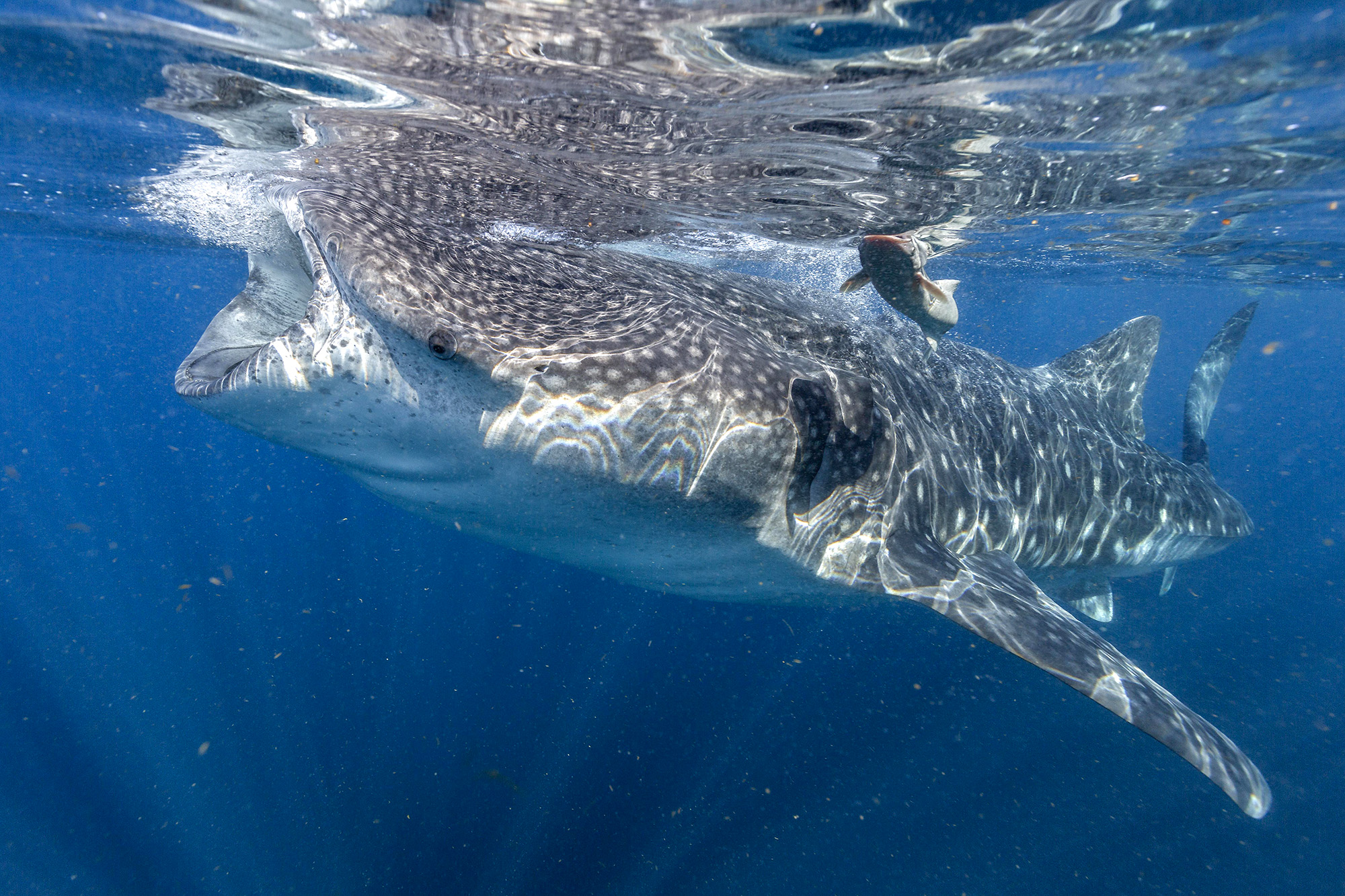
These gentle giants of the seas can live for almost 100 years and are considered to reach sexual maturity only in their 30s. The population of this species is unknown, but it is considered by the IUCN as an endangered species, due to the fact that in the last fifty years the average temperatures of the oceans are increasing, and this trend is expected to increase. As the water warms, it affects the distribution of species, including larvae and plankton, that the whale shark feeds on. Another threat that this marine species suffers from is massive fishing since the whale shark is considered a delicacy in the diet of many areas of the planet. Fortunately, in Mexico it is a protected species, and its fishing is prohibited. However, the increase in tourist activities related to this species in this area and the transit of boats interrupt their eating habits and cause injuries when they collide with boats.
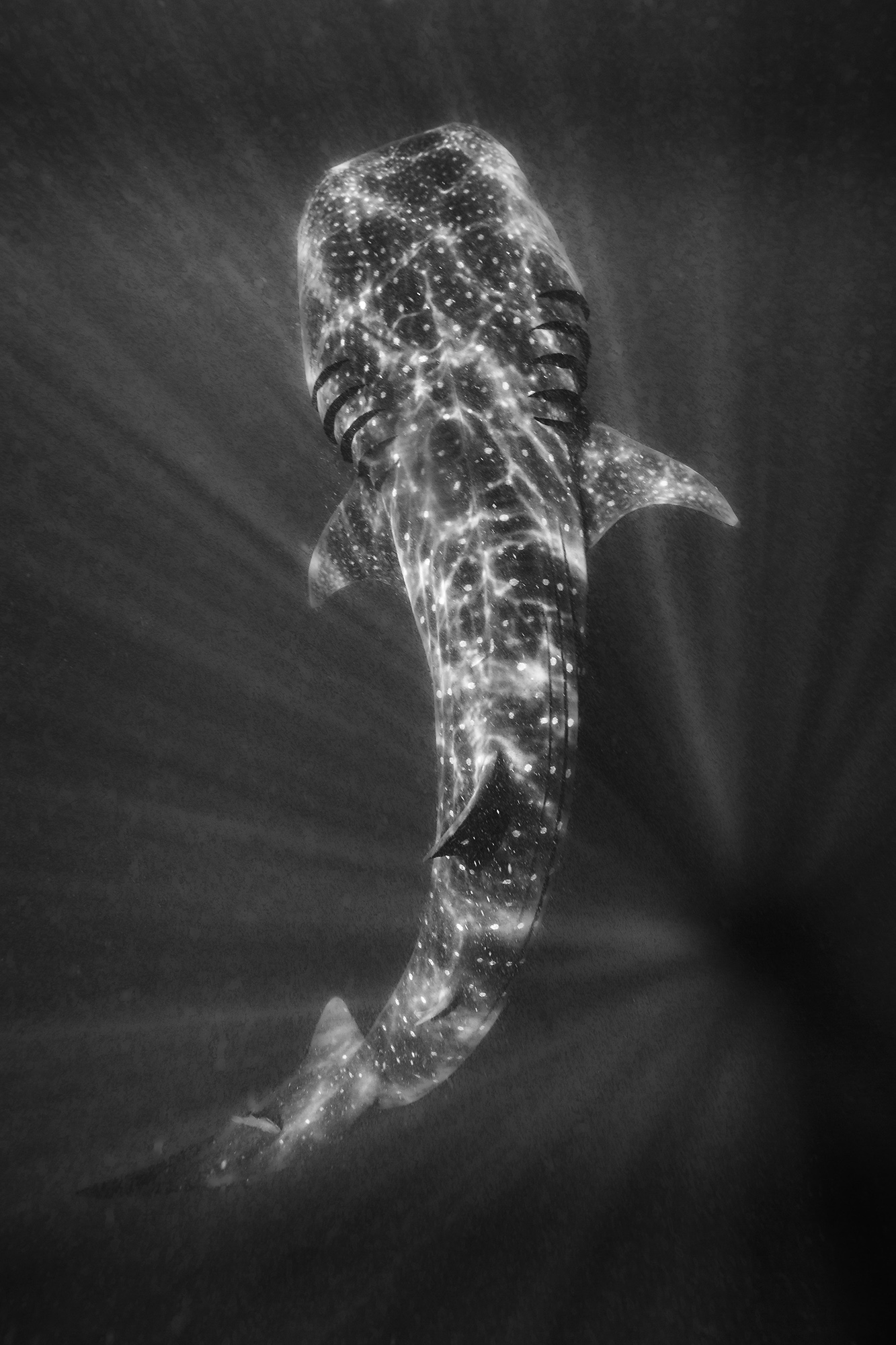
Photographing whale sharks tends to be a top bucket list item for many underwater image-makers, but it is a difficult achievement. Whale sharks are massive!!! It seems obvious for the fish considered the largest on the planet, but you really get the dimension of it once you are in the water next to it. It is as if you are swimming next to a bus! Therefore, the photographer will have to equip himself with the widest lens he can. Ideally, it should be a fixed or zoom fisheye lens: both offer a field of view of up to 180 degrees and reduce the minimum focusing distance, which means you can get as close to the shark as possible and still capture it in its full.
Artificial lights are a valuable asset in most diving conditions: the light disappears quickly at depth and the flash can add color and contrast. However, when swimming with whale sharks, you want to be as mobile and agile as possible. And, since whale sharks feed on the surface, you can shoot completely in ambient light. So, leave the lights on the boat or at the resort. You will be able to swim faster, maneuver faster, and have fewer settings to worry about.
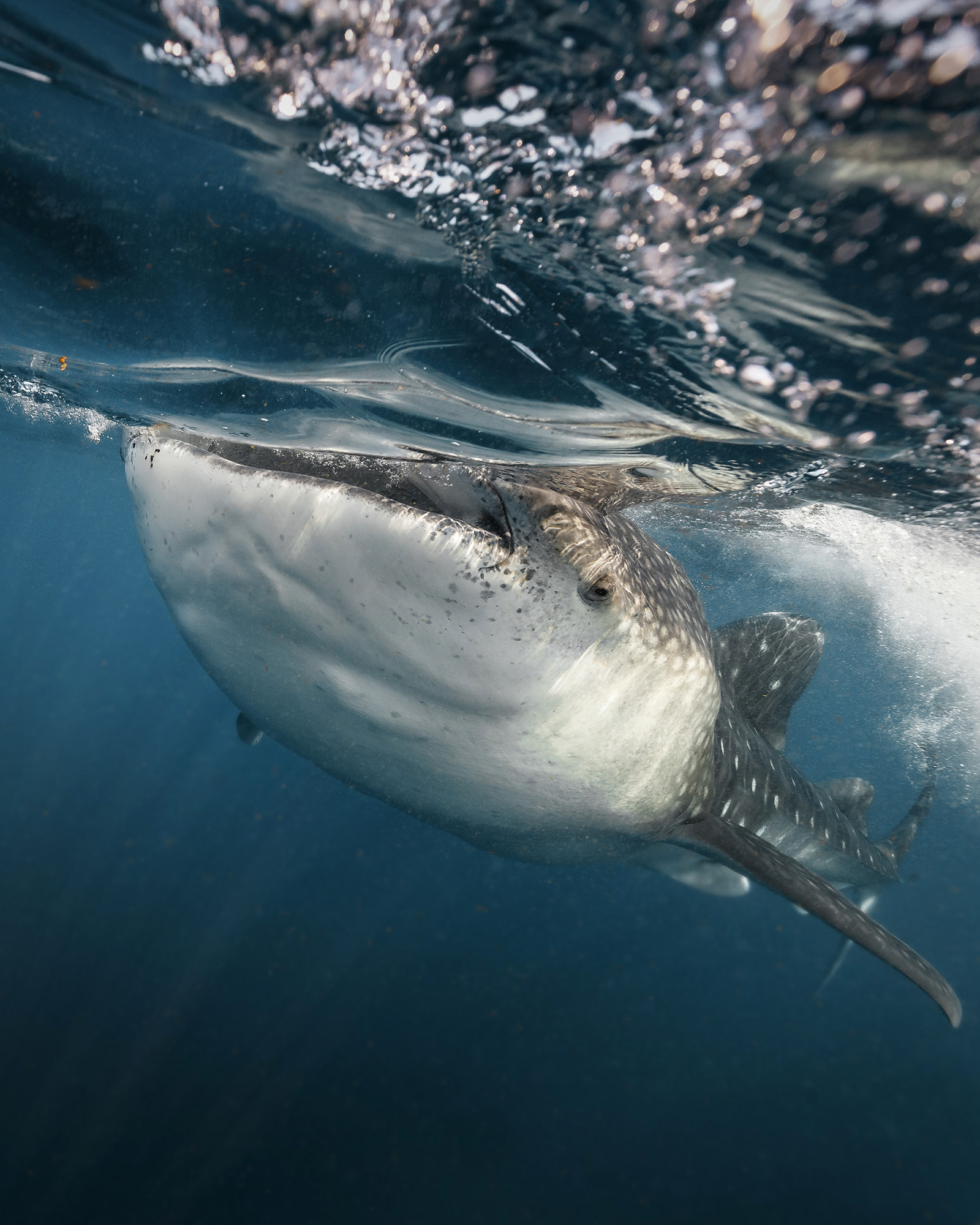
Encounters with these huge animals tend to be fleeting, but if time is on your side, you may want to try taking photos of different aspects of the animal or try different types of framing or techniques. Look for close-ups of the animal’s huge open mouth as it feeds, paying special attention to correctly focusing its small eyes. For this, you will have to be very close to the animal, but always respecting the distance so as not to touch or disturb it.
Whale sharks are inherently shy animals that have never been seen to mate or give birth, so if you are lucky enough to come across any of these behaviors shoot like a possessed photographer, as that material will not only be photogenically incredible, it will also constitute an invaluable documentary record.

On some occasions, when sharks find large amounts of food, they tend to feed in an upright static posture, known among locals as “bottling”. These occasions are ideal to make different images without so much physical effort. Another interesting technique when it comes to large animals is to try to make silhouettes, since this type of photography is relatively easy. To do this, you must dive down a few meters deep and wait for the body of the shark to block the sunlight. It is important to note that here in Mexico, diving while swimming with the whale shark is prohibited and this can only be done with special permits granted by the environmental preservation authorities.
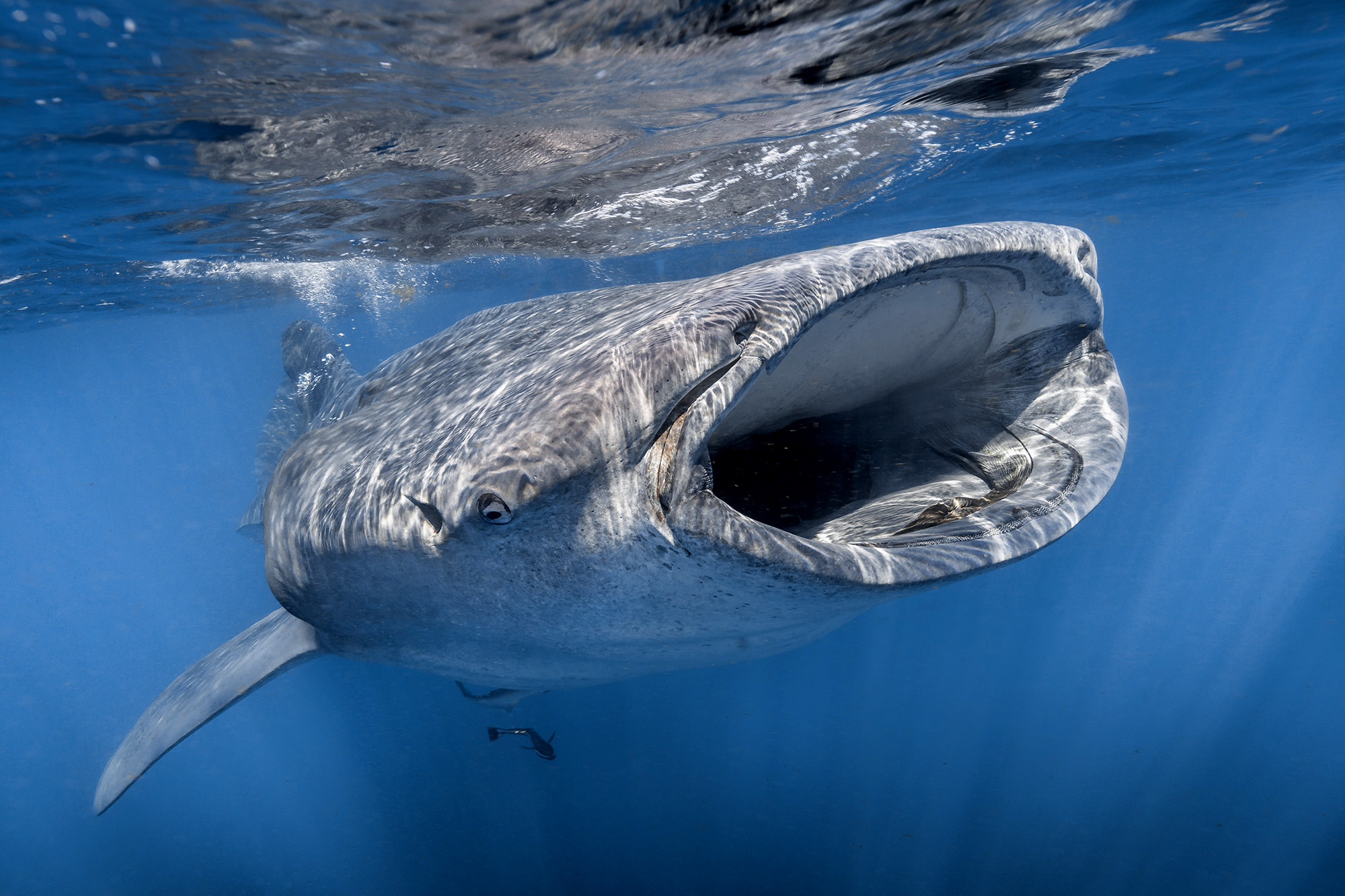
Finally, try to take photos of the back of the animal seen from above. Although this type of photography is not very attractive, it can be of invaluable information for scientists, since the pattern of each shark is unique and serves to identify each individual. Helping science with these photos is an important contribution that we can make as underwater photographers for the conservation of the species.
Also do not forget to make both horizontal and vertical frames, and also try to achieve some images with people that will serve as a scale so that the true dimension of these colossi can be appreciated in our photos.
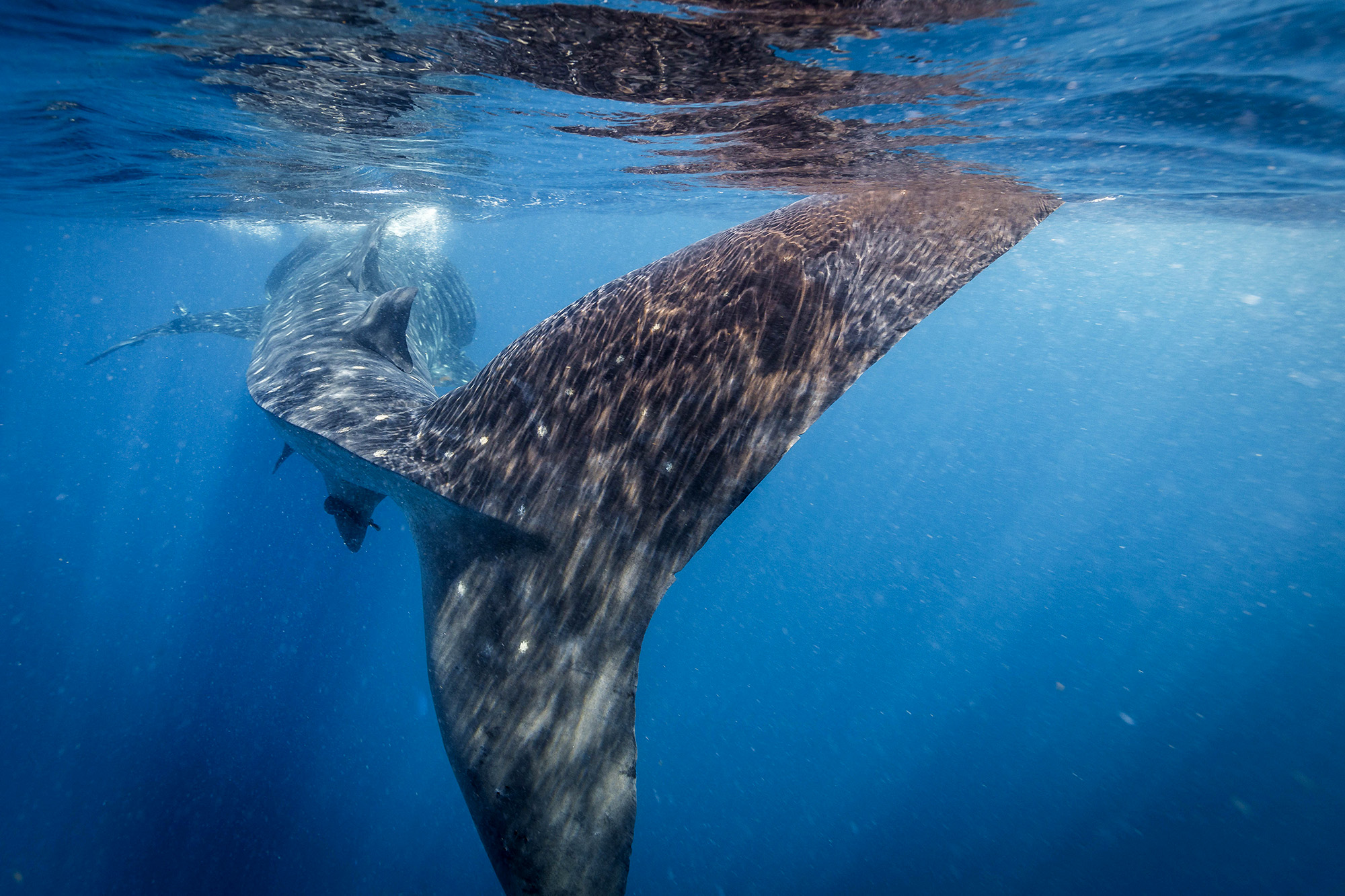
Interacting with marine life is always a fascinating experience. Doing it with Whale Sharks is on another level all together. They are huge creatures and they have crossed our oceans for 65 million years, so if you have the chance to see them in person, swimming freely and in their natural environment, consider yourself extremely lucky to be able to witness one of the great natural spectacles of our fascinating Planet Earth.
CAPTION Shark-watching tourism is also causing serious damage. Many individuals have been injured by boat propellers.
